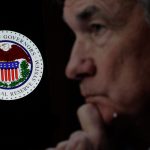This report examines whether a Federal Reserve Chair has ever been fired by a U.S. president, analyzing legal frameworks, historical cases, and judicial precedents. The findings confirm that no Fed Chair has been dismissed, with the Federal Reserve Act and landmark Supreme Court rulings providing robust protections against such actions. Strategic reassignments, rather than firings, mark the closest historical analogs, underscoring the enduring autonomy of the Fed. If President Trump attempts to fire Federal Reserve Chair Jerome Powell, several assets could face significant impacts due to heightened uncertainty and eroded confidence in U.S. monetary policy:
U.S. Dollar: Likely to decline sharply, as seen in the DXY’s recent drop to 98.50, due to fears of a politicized Fed and weakened global reserve status.
Gold: Expected to rally further, potentially exceeding its current $3,425 high, as investors flock to safe-haven assets amid instability.
Equities: U.S. stock indices like the Nasdaq, S&P 500, and Dow could see sharp declines, with tech and media stocks particularly vulnerable, as risk-off sentiment intensifies.
Bonds: Treasury yields may spike initially due to inflation fears from a less credible Fed, but prices could later fall if economic slowdown concerns dominate.
Bitcoin/Cryptocurrencies: Could experience volatility, with potential for short-term dips due to risk aversion, though long-term bullish sentiment from whales may cushion declines.
Oil: Prices may soften further, as seen in recent 3% drops, due to reduced economic confidence and demand fears.
These impacts hinge on market perceptions of Fed independence and the legal outcome of any removal attempt, with volatility likely across asset classes.
The independence of the Federal Reserve (Fed) is a cornerstone of U.S. monetary policy, designed to insulate economic decision-making from political pressures. Recent discussions about the potential removal of a Fed Chair have raised questions about historical precedents.
US Legal Framework Governing Fed Chair Removal
The Federal Reserve Act of 1913, as amended, establishes the terms under which Fed governors, including the chair, serve. Governors are appointed to 14-year terms, while the chair and vice chair serve four-year terms, renewable at the president’s discretion. Section 10 of the Act allows the president to remove a governor “for cause,” which legal scholars interpret as serious misconduct, such as inefficiency, neglect of duty, or malfeasance. However, this authority has never been tested against a Fed Chair.
The requirement for “cause” sets a high bar, intended to shield the Fed from political interference. The 1935 Supreme Court decision in Humphrey’s Executor v. United States further reinforced this independence, ruling that the president cannot remove members of independent agencies like the Federal Trade Commission without cause, a precedent widely applied to the Fed. This legal framework makes firing a Fed Chair both procedurally challenging and politically contentious.
Historical Cases: No Firings, Only Reassignments
No Federal Reserve Chair has been fired in the Fed’s 111-year history. Two historical cases, however, are often cited in discussions of chair transitions, though neither constitutes a dismissal:
1. Marriner Eccles (1934–1948): Eccles served as Fed Chair during the Great Depression and World War II, overseeing significant monetary policy reforms. In 1948, President Harry Truman opted not to reappoint Eccles as chair, instead naming Thomas McCabe. Eccles continued to serve as a Fed governor until 1951, indicating that his departure from the chair role was a strategic decision rather than a firing. Truman’s move reflected policy disagreements, particularly over interest rate controls, but did not involve invoking “for cause” removal.
2. G. William Miller (1978–1979): Miller’s tenure as Fed Chair was brief and marked by challenges in combating stagflation. In 1979, President Jimmy Carter appointed Miller as Treasury Secretary, effectively transitioning him out of the Fed. Paul Volcker was named as Miller’s successor. This reassignment was not a dismissal but a calculated move to address economic pressures, with Miller continuing to serve in a high-profile cabinet role.
These cases highlight that presidents have historically influenced Fed leadership through appointments or reassignments rather than outright firings. The absence of dismissals reflects both the legal protections and the political risks of challenging Fed independence.
Judicial Precedents and Fed Independence
The Humphrey’s Executor v. United States ruling is pivotal in understanding the Fed’s autonomy. In 1935, President Franklin Roosevelt attempted to remove William Humphrey, a Federal Trade Commission member, without cause, citing policy differences. The Supreme Court ruled that members of independent agencies serve fixed terms and can only be removed for cause, establishing a precedent that protects Fed governors. This decision has deterred presidents from attempting to fire Fed Chairs, as such actions would likely face legal challenges and public backlash. Subsequent cases, such as Wiener v. United States (1958), have reaffirmed these protections, solidifying the Fed’s status as an independent entity.
Implications of Firing a Fed Chair
Attempting to fire a Fed Chair would have profound economic and political consequences. Such an action could undermine confidence in U.S. monetary policy, trigger market volatility, and weaken the dollar’s global reserve status. The Fed’s credibility in managing inflation and economic stability relies on its perceived independence. A dismissal without clear evidence of misconduct would likely face legal scrutiny, potentially escalating to the Supreme Court. Moreover, it could strain relationships with international financial institutions and trading partners, amplifying global economic uncertainty. Historically, presidents have avoided this path, opting instead for dialogue or strategic appointments to influence Fed policy.
No Federal Reserve Chair has ever been fired by a U.S. president, a testament to the robust legal and institutional safeguards protecting the Fed’s independence. The Federal Reserve Act’s “for cause” requirement, reinforced by the Humphrey’s Executor precedent, sets a high threshold for removal, deterring such actions. Historical cases like those of Marriner Eccles and G. William Miller demonstrate that presidents have used reassignments or non-reappointments to navigate policy differences, avoiding direct confrontations. As debates over Fed leadership continue, the absence of historical firings underscores the enduring strength of its autonomy, a critical factor in maintaining economic stability.
 Noor Trends News, Technical Analysis, Educational Tools and Recommendations
Noor Trends News, Technical Analysis, Educational Tools and Recommendations





